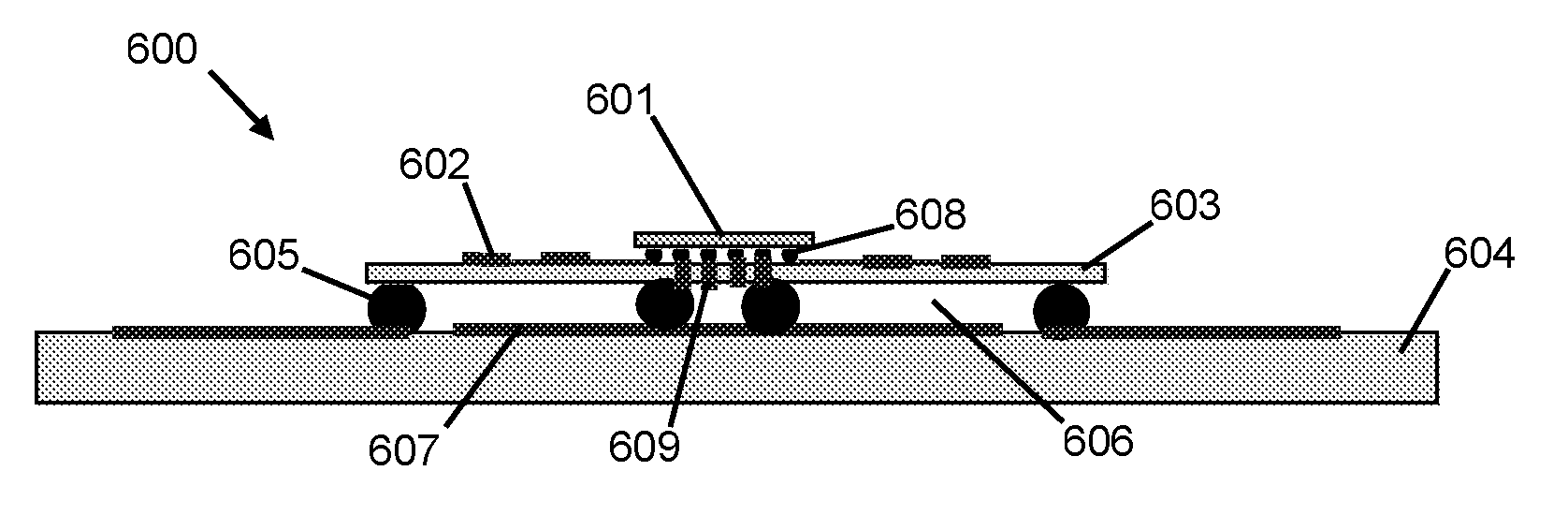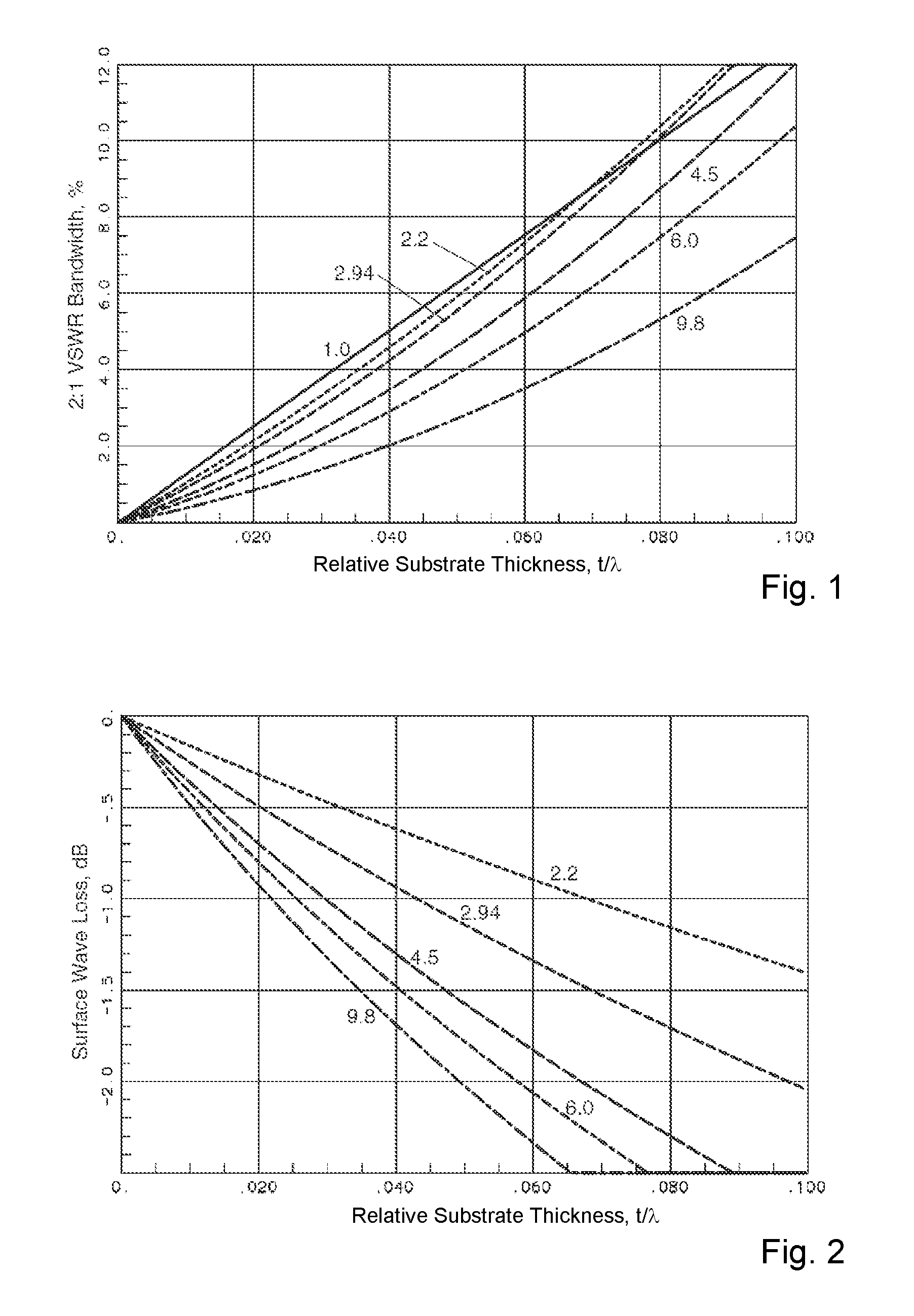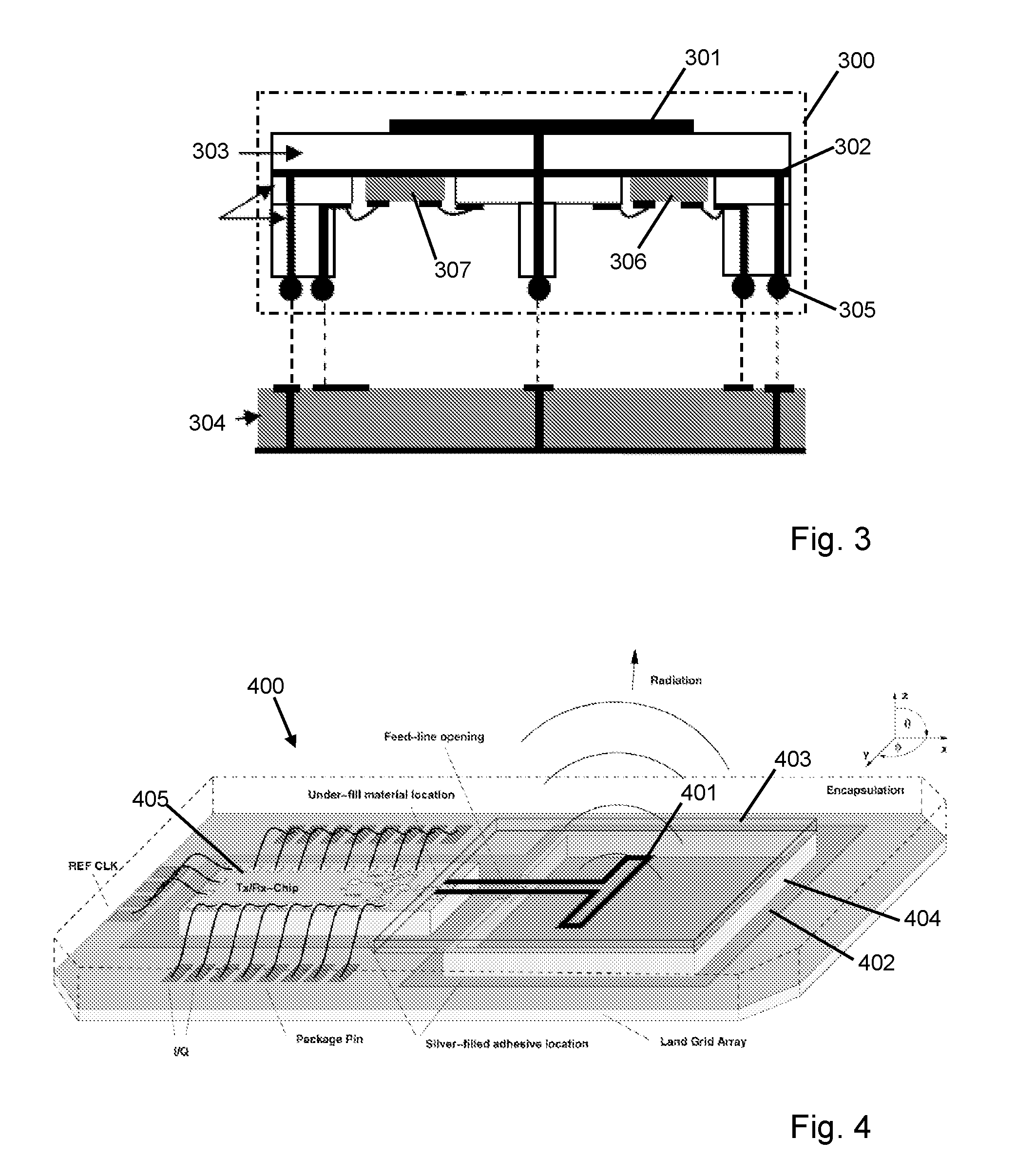Millimetre-wave radio antenna module
- Summary
- Abstract
- Description
- Claims
- Application Information
AI Technical Summary
Benefits of technology
Problems solved by technology
Method used
Image
Examples
Embodiment Construction
[0053]FIGS. 1 to 5 have already been discussed above in relation to the background to the invention.
[0054]An embodiment of an antenna module package 600 according to the invention is illustrated in a schematic cross-section shown in FIG. 6. The package 600 comprises an active semiconductor die 601 and a micro-strip antenna 602 formed on a standard BT (Bismaleimide Triazine) epoxy laminate substrate 603. The die 601 is mounted on the same substrate 603 as the antenna 602, and the antenna substrate 603 is mounted on an underlying substrate or motherboard 604 by means of a ball grid array comprising an array of conductive balls 605.
[0055]An important feature of the antenna module construction shown in FIG. 1 is the use of the air dielectric gap 606 between the antenna substrate 603 and a ground plane 607 on the motherboard 604. The air gap 606 acts as a high quality dielectric medium for the micro-strip antenna 602. This method of construction results in various advantages, detailed as...
PUM
 Login to View More
Login to View More Abstract
Description
Claims
Application Information
 Login to View More
Login to View More - R&D
- Intellectual Property
- Life Sciences
- Materials
- Tech Scout
- Unparalleled Data Quality
- Higher Quality Content
- 60% Fewer Hallucinations
Browse by: Latest US Patents, China's latest patents, Technical Efficacy Thesaurus, Application Domain, Technology Topic, Popular Technical Reports.
© 2025 PatSnap. All rights reserved.Legal|Privacy policy|Modern Slavery Act Transparency Statement|Sitemap|About US| Contact US: help@patsnap.com



